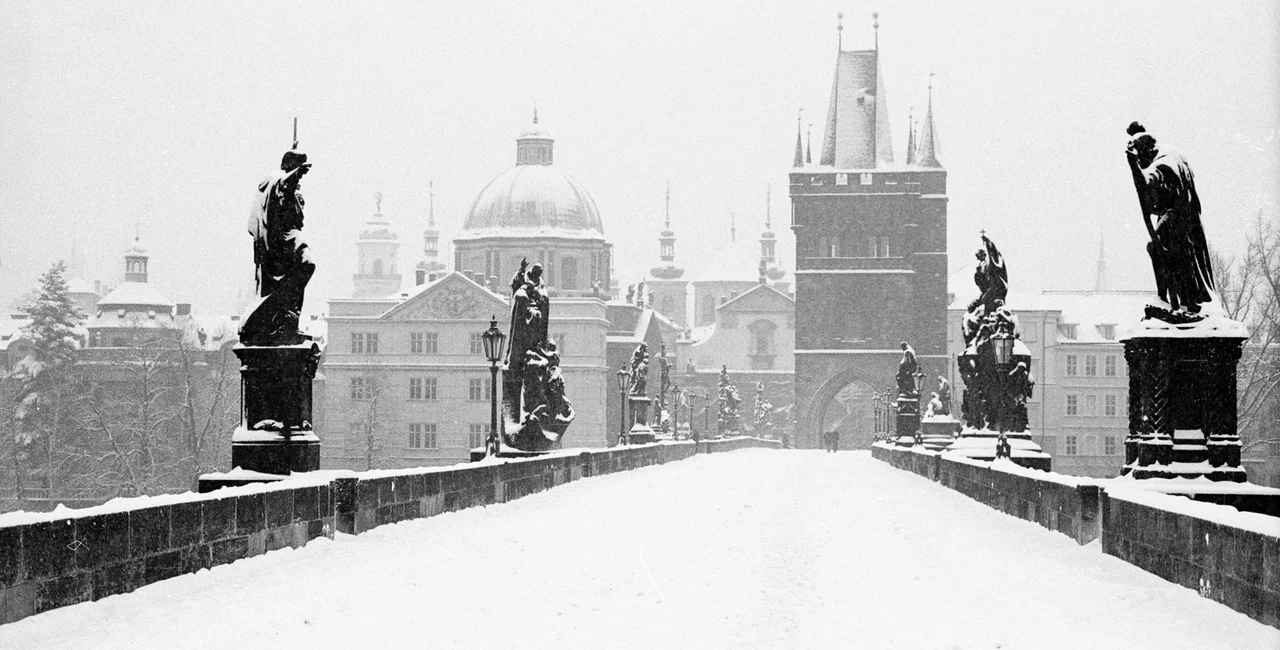A classic holiday talks about dreaming of a white Christmas. In the Czech Republic, the odds are that, outside of mountain areas, it will remain a dream as there has only been Yuletide snow twice in the past 20 years.
While modern meteorology give us a statistical-based view of the coming weather, for centuries people made their forecasts based on folk sayings. These also are skeptical of winter snow.
A truly white Christmas snow cover of at least 50 cm was last seen at Prague’s Klementinum, the city’s main weather station, in 2001 and 2010. While it is hard to predict the weather a month in advance, long-term meteorological models predict for this year that December temperatures in Europe should be above average, making snow unlikely. Temperatures significantly above freezing occured in 2006, 2015 and 2016.
“White Christmas was also present in the years 1996 and 1981. If we look more at history, then we come across white Christmas in 1969, with snow cover over 70 cm,” meteorologist Dagmar Honsová told the news server ŽivotvČesku.cz.
The record early December 1969 snow in Prague can be seen in a silent black-and-white video in the online archives of newsreel company British Pathé.
Meteorologists say that the country’s non-mountain areas have holiday snow once every eight years, so while it is slightly overdue it is still a bit unlikely.
Christmas mud is more common, as there is a long-term pattern of a warm ocean current reaching Central Europe between Dec. 23 and Jan. 1.
Meteorology is a fairly new science. For centuries Czechs, and people across Europe, prediucted the weather based on folk sayings. In Czech, these are called “pranostiky,” and the first written mention is in 1587, but they were clearly already quite old. For all the sayings, Christmas is understood to be Dec. 24.

One of the most famous is for St Martin’s Day on Nov. 11: “St. Martin arrives on a white horse” means snow is expected soon. But sometimes that isn’t good news. Another saying is: “St. Martin on ice, Christmas on mud.”
You can follow the sayings from one to another and get a broad overview of the year. The saying for April 23 is: “If fodder is already green on St George’s day, winter will arrive on St. Martin’s day.” It follows then, from the previous saying, that Christmas would be muddy.
The saying for Nov. 25 is one of the more straightforward: “Catherine in the mud, Christmas on ice; Catherine on ice, Christmas on mud.” This Nov. 25 was cold and dry, without mud or ice.
Also, cold weather is predicted for the same day: “We will hide on St. Catherine’s under the blankets.”
One saying for Dec. 25 is rather ominous: “When it rains on God's birthday, drought destroys the crops.”
Another saying for Christmas takes us into the next year: “Green Christmas, white Easter; Christmas on ice, Easter on mud.” The sayings, though, are only accurate at the level of random chance.












 Reading time: 2 minutes
Reading time: 2 minutes 























